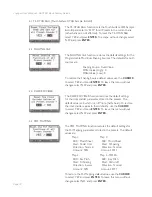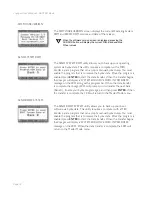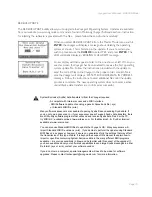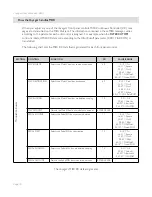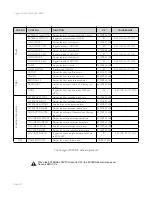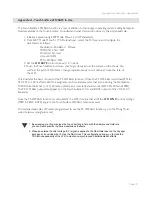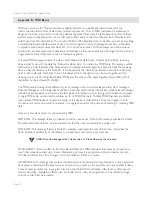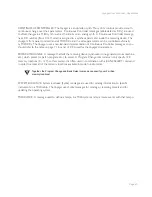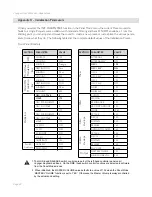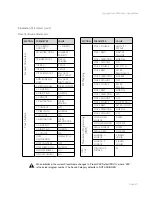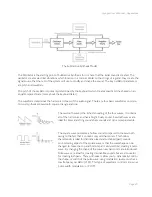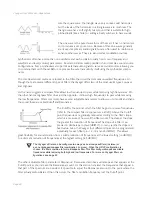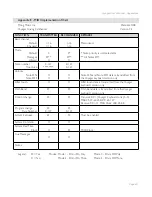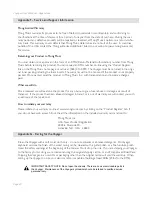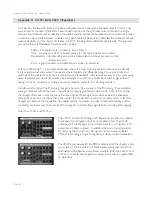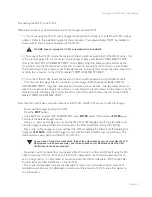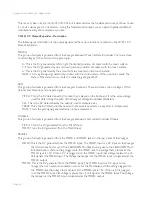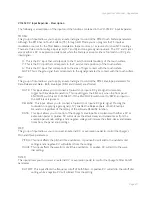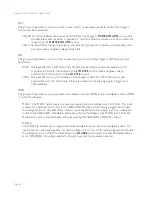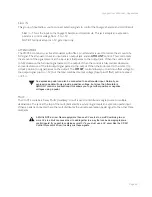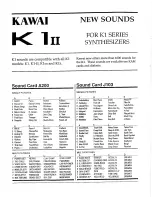
Page 84
Voyager User’s Manual - Appendices
Page 85
Voyager User’s Manual - Appendices
Appendix D - SynthesisTutorial
For those who are new to the world of electronic music, let’s take a few moments to go through the basics
of sound and synthesis.
Sound is simply the audible change in air pressure. When we perceive
sound, our ears are responding to variations in air pressure that hap-
pen to occur in our range of hearing. The rate of these variations is
called the Frequency, which is measured in cycles per second, or Hertz
(Hz). Generally, our ears can hear frequencies from about 20 Hz (on
the low end) to about 20,000 Hz (on the high end). The frequency of
a sound corresponds to its pitch. A low frequency corresponds to a
low-pitched sound (such as a bass) and a high frequency sound cor-
responds to a high-pitched sound (such as a piccolo).
A second perception of sound is its volume or loudness. Loud sounds
create big fluctuations in air pressure, while soft sounds create small
fluctuations. The measurement of these fluctuations is called the
Amplitude, which is measured in Decibels (dB).
A third perception of sound is its tone color, also known as its timbre. There is no standard of measurement
for timbre, so instead we use familiar terms to describe the tone color of a sound – bright or dull, buzzy or
mellow, tinny or full. The tone color is a function of the harmonic content of the sound. Sounds that are
bright and buzzy have a lot of harmonics, while sounds that are muted and dull have few harmonics.
Harmonics are mathematically related overtones of the base pitch. To explain what that means, let’s consid-
er an example: if the base pitch is 100 Hz, harmonics will occur at 200 Hz (2 x 100), 300 Hz (3 x 100), 400
Hz (4 x 100), etc. The levels of the harmonics are always much lower than the level of the base pitch, and
they decrease as the frequency goes up, so a 200hz harmonic will be louder than a 300Hz harmonic, which
will be louder than a 400Hz harmonic, and so on. Note that there are some sounds that contain overtones
that are not mathematically related to the base pitch. These include the ‘metallic’ sounds created by percus-
sion instruments like cymbals, gongs and chimes, and noise sounds like wind or white noise. The overtones
of these sounds are called ‘inharmonic’, as they don’t fit neatly into a mathematical relationship with the base
pitch.
Using the electrical circuits in synthesizers, we can manipulate the three parts of sound (pitch, volume and
timbre) to create new sounds and simulate existing ones. This process is called Synthesis. There are a
number of ways to synthesize sound electronically (including frequency modulation, granular, phase
distortion and additive to name but a few), but the method used most often is called Subtractive Synthesis.
In Subtractive Synthesis, you start with signals rich in tone color, and then eliminate (i.e. subtract) frequen-
cies to achieve the desired sound.
A synthesizer design based on subtractive synthesis typically consists of three main components and three
auxiliary components. The main components are the Oscillator, Filter and Amplifier, and the auxiliary
components are the Keyboard controller, Envelope Generator, and Low Frequency Oscillator.



